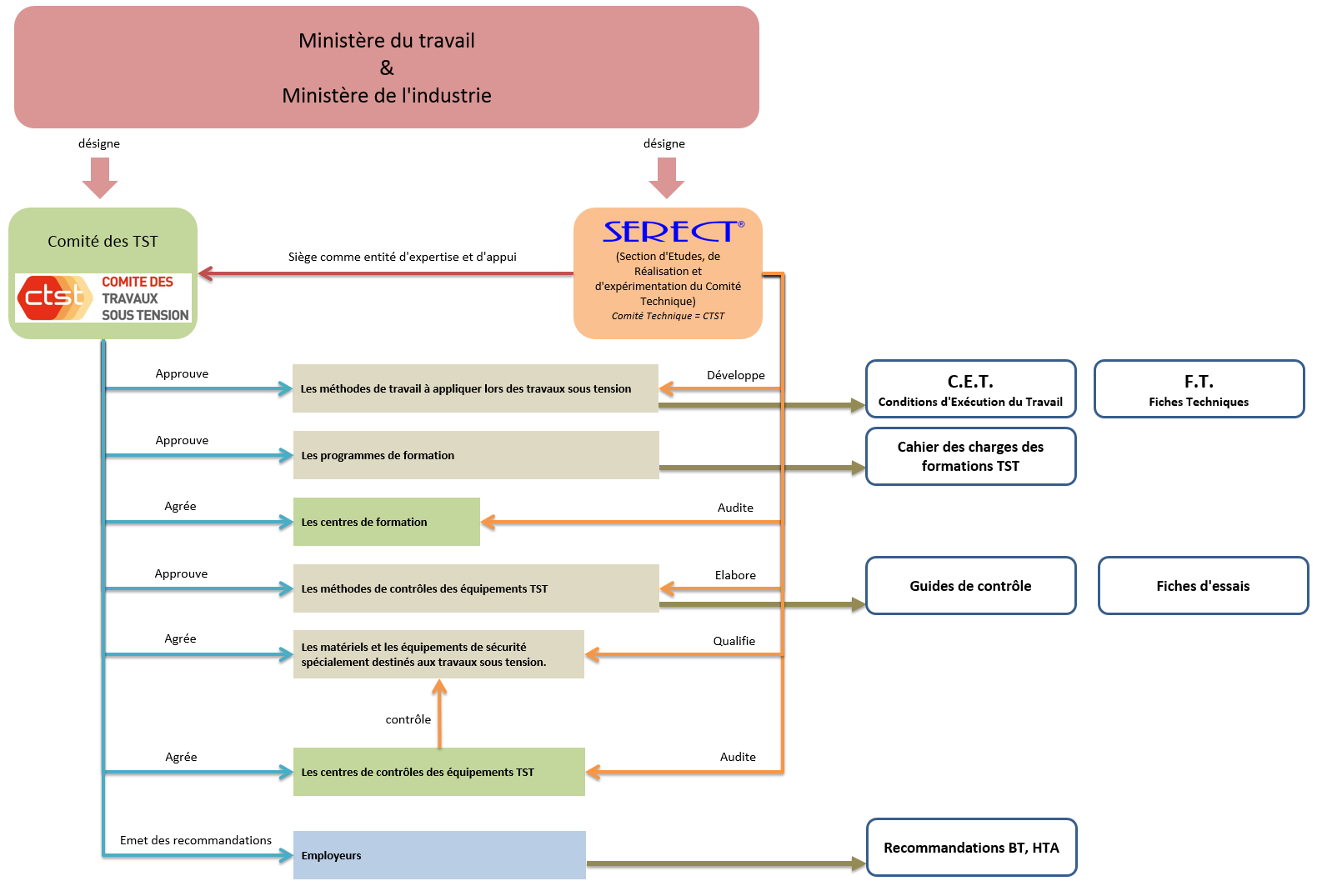Organisation of LW in France
Organisation of LW in France
The jurisdiction of the Live Working Committee covers electricity distribution grids. These grids involve public power distribution and transport networks operated by French network managers.
The choice of using Live Working is left to the network manager, which may select:
- Either live operations,
- Or dead operations
The 19 June 2014 decree amending the decree dated 17 January 1989 indicates the set of general safety instructions quoted in article 4 of decree 82-167 dated 16 February 1982 relating to work on grids. This is the compendium UTE C 18-510-1 arising from French standard NF C 18-510.
The missions of the Live Working Committee arise from decree 82-167 dated 16 February 1982 relating to work on grids and the interministerial decision passed on 1 July 1983 appointing the Live Working Committee to :
- Approve training programs
- Authorise training centres
- Approve working methods
- Approve technical sheets for tools and safety equipment specially designed for Live Working
In addition, the Live Working Committee :
- Approves test methods
- Authorises periodic testing centres for LW tools
- Analyses the LW accident rate
- Issues recommendations to employers
- SERECT to carry out experimental work to develop new methods.
The Live Working Committee relies on SERECT (Design, Execution and Experimentation Section of the Live Working Committee) to carry out experimental Live Working to perfect new methods.
SERECT has developed a special technique, unique in the world, based on the risks analysis and definition of a corpus of rules (WC, TDS), particularly associated with safe working conditions, making it very adaptable to the operation to be carried out.
These rules or WC (Working Conditions) define a general working framework for substation, power line or helicopter-based operations, and are based on tool technical data sheets (TDS) as well as Special Operation Regime (RSE) guidelines. Using these methods, great importance is placed on preparing the work and the roles of work preparation technicians, who thus gain a better grasp of the geometric and electrical environment of their working area and working conditions.
This approach provides better control of operations by all those involved carrying them out. In this way, this method guarantees safety and effectiveness, and contributes to developing the professionalism of work and maintenance tests.
The diagram below describes the overall organisation of LW on electrical distribution grids.

